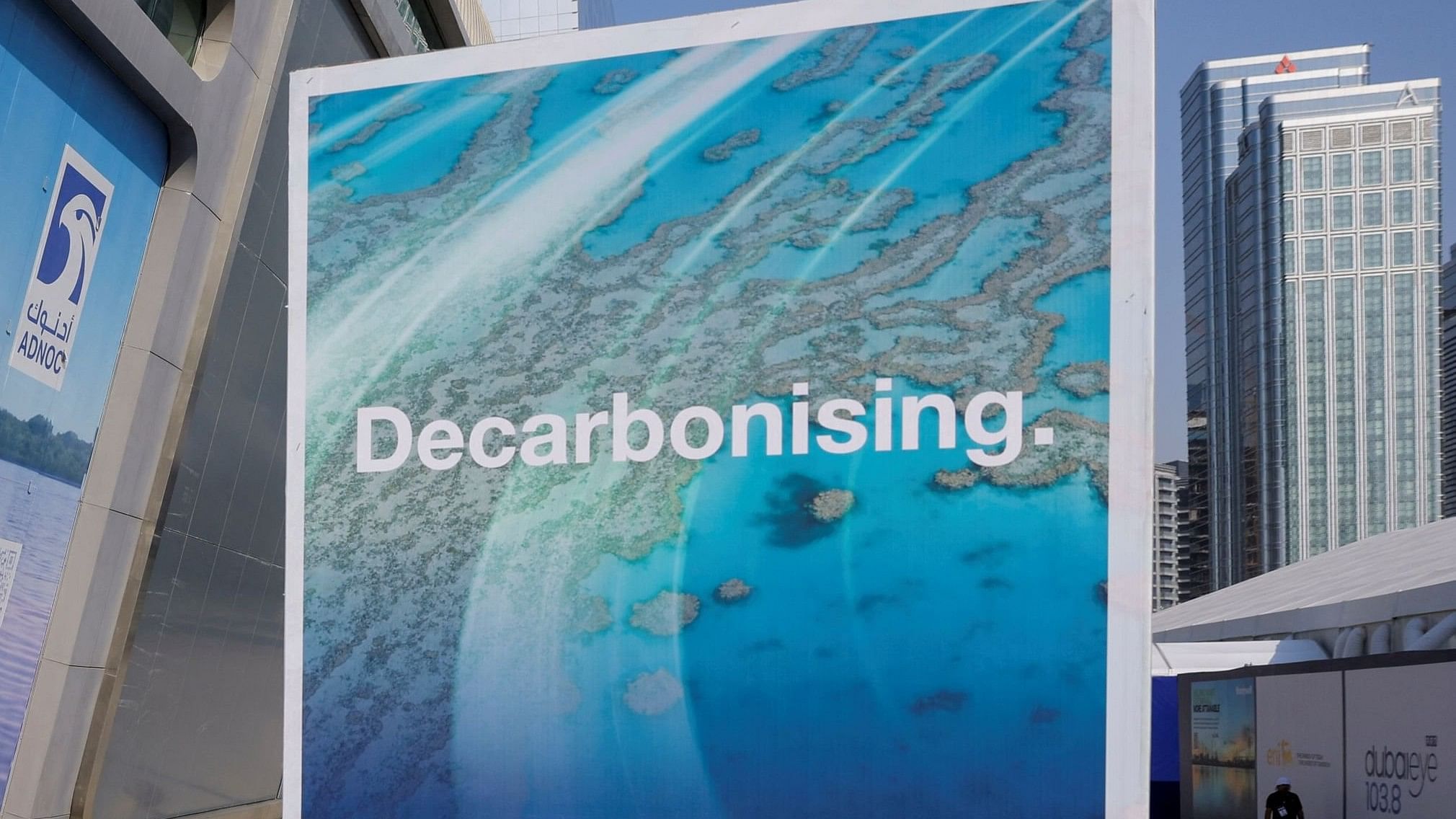
Large private-sector buyers influence public procurement incentives, directing supply chains towards decarbonisation.
Credit: Reuters Photo
The Climate Policy Initiative’s 2023 policy brief, ‘Policies and enabling environment to drive private investment for industrial decarbonisation in India,’ suggests that green public procurement is more impactful than research and development (R&D) tax credits for industrial decarbonisation, as the latter fail to address risk returns from commercial-scale projects.
Procurement incentives align with other high-impact regulatory strategies such as carbon pricing, certification, subsidies, and credit guarantees. Yet, procurement is underutilised for decarbonisation innovations in India, indicating a missed opportunity in innovation policy.
Procurement and regulation represent two sides of the public good, with procurement supplying goods to the government and regulation ensuring goods are provided to consumers on behalf of and controlled by the government. Large private-sector buyers influence public procurement incentives, directing supply chains towards decarbonisation.
This role is highlighted in recent reports such as the IPCC Assessment Report (AR6) and the Global Stocktake of CoP28, which emphasise the impact of environmentally conscious supply chains on sustainability pathways.
Government and corporate procurement, comprising a significant portion of national incomes and expenditures, hold transformative power. The former accounts for over 12 per cent of GDP in industrialised countries and over 30 per cent in emerging economies. This significant spending power should be leveraged for decarbonisation efforts, particularly in energy and industry. Environmental Public Procurement Policies or Green Procurement Policies standards have proven value in environmental performance and clean technology adoption.
In the energy sector, national budgets and private sector investments are promoting solar PV adoption. But merely improving the carbon intensity of electricity is not enough for a successful transition to net zero. Life Cycle Assessments (LCA) reveal that reducing carbon intensity alone does not necessarily lower overall greenhouse gas emissions.
Policymakers familiar with the Jevons Paradox understand that efforts to improve resource efficiency can inadvertently lead to increased resource consumption. To effectively decarbonise, reducing resource intensity must be accompanied by curbing industry consumption. Opportunities in industrial manufacturing sectors are in industrial heat, fuels, materials, chemicals, steel, food, cement, and forest products. In the services’ sectors, opportunities are in transportation, health care, and education.
The absence of specifically directed policies means that investments in R&D continue to go to the bigger sector by market size, namely the carbon intensity improvement sector, at the expense of investment in energy consumption savings. The gap becomes even more difficult to bridge as time passes. The decrease in intensity was close to 4 per cent in the United States in 2022, but electricity consumption rose by about 3.2 per cent. The rising electricity consumption erased almost all intensity gains. The higher acceleration of electricity consumption relative to intensity improvement in most countries makes decarbonisation a distant aspiration. This dual challenge highlights the need for policies that simultaneously address both intensity and consumption to effectively decarbonise.
The procurement of consumption-decelerating R&D will not be easy to design. Policy intervention is critical to overcome the undersupply of all public goods when left to market forces. This is especially true of energy-saving R&D. Market failures encompass three key challenges: divergence in social benefits and private costs in energy savings — the hallmark of externality; externality of technology spillover; and information asymmetry among stakeholders. Procurement contracts must lower R&D risks and costs for private stakeholders. They must use designs such as reverse auctions, contests, and incentive contracts to minimise selection and performance risks arising from incomplete and private information. They must create research syndicates and consortiums of industry, academic, and government stakeholders to overcome technology transfer barriers.
In January 2022, the Union Finance Ministry established the Procurement Research Centre (PRC) to offer research-based policy input aimed at improving government procurement practices. The PRC hosted a conference, ‘Recent Advances in Public Procurement,’ in Delhi last month, which emphasised the importance of balancing regulatory compliance with enhanced performance and highlighted the necessity of public policies and strategic procurement practices to foster innovation. It advocated shifting the focus from price to multifaceted considerations in dynamic R&D procurement.
The PRC, while advancing procurement knowledge, should initiate a targeted research programme on procurement strategies for decarbonisation. Collaborating with institutional stakeholders such as the Ministry of Commerce and Industry, particularly the patents office, is crucial. The MoC&I 2022–23 report, ‘Intellectual Property India,’ highlighted a surge in patent filings, with IITs collectively submitting over 800 applications. However, classifications couldn’t specify the proportion aimed at decarbonisation. Research underscores that without supportive policies, even technologies with short payback periods diffuse slowly.
Public procurement offers the potential to scale up emerging performance-enhancing technologies, accelerating the learning curve and unlocking economies of scale sooner. Innovations must prioritise reducing energy consumption while enhancing industrial products and services for improved human development. Comprehensive policies throughout all stages of new technologies are essential for driving clean asset expansion, fostering innovation, and catalysing sustainable development.
(The writer is a former faculty at leading B-schools in India, Singapore, and the US)